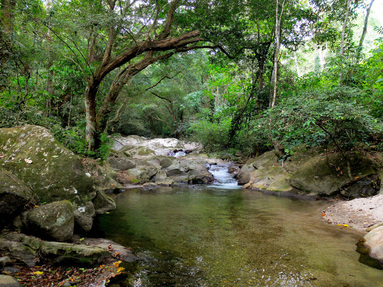 a secluded swimming hole
a secluded swimming hole Looking for a bit of a break from the intense heat of Santa Marta and the Caribbean coast, we decided to head up into the tiny town of Minca, nestled away in the Sierra Nevada mountains (which include the highest tropical mountain in the world). After forty five minutes up a bumpy dirt road we found ourselves standing in the tiny main square of a quiet, two-street town with a couple of small restaurants, a tiny market and an internet cafe - this is our kind of place!  a secluded swimming hole a secluded swimming hole Minca is an up-and-coming eco-tourist destination, a great place to relax in the cooler mountain air while taking a break from the hours of hiking accessible from town. A great place for bird-watching, taking a dip in the local swimming holes, touring the nearby coffee plantation, or just walking for hours on the tiny dirt road that leads further up into the mountains from Minca. Minca's also a possible starting point for treks to the Lost City (La Ciudad Perdida) - I wish we'd known this before spending time in nasty Santa Marta (though we wouldn't have saved Charles, the dumpster kitten if we hadn't gone there).
0 Comments
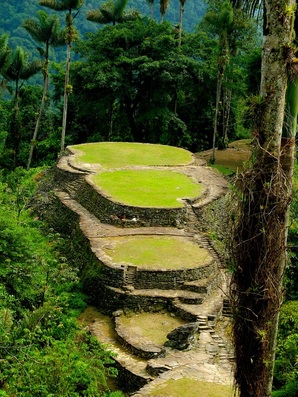 La Cuidad Perdida La Cuidad Perdida After our time in San Gil we were ready to head north to the Caribbean and spend some time lounging on a beach, but not before earning it. We arrived in Santa Marta early in the morning and settled into a hostel near the main market area. At first glance the city was pretty terrible: smelled of urine and rotting garbage mixed with thick black car exhaust, noisy vehicles, sketchy people, etc. I had no interest in walking around so after inquiring into “La Ciudad Perdida” (the Lost City) five-day trek through the jungle, I decided to relax and read a book for the rest of the day. Santa Marta & DumPster Kitty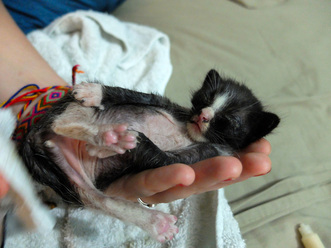 TINY guy TINY guy Andrew went to the bank machine and for a little walk around our area. I had expected him to take longer but after 10 or 15 minutes he barged into the room panicking, with something tucked away in his shirt. At first I thought it was a mouse or a small rat, Andrew just mumbled that he had found it screaming on a sidewalk and could barely explain that no one seemed to care and someone made fun of him for picking it up! It was a TINY kitten. Couldn’t have been more than 4 or 5 days old, with eyes still closed and one of them swollen to half the size of its head. Its hair was thick with dirt and smelled like human urine! Our hearts broke and we didn’t know what to do. Feeling like this kitten urgently needed some food, we left the hostel in search of a veterinarian. It took us far too long to find one but we eventually did after wandering through nasty smelly sweaty streets and market stands. We bought a container of kitten milk powder that you just add water to and a syringe we could use to try and feed him. We hurried back to the hostel and sterilized the syringe. Using a damp towel I cleaned the kitten as best I could while Andrew mixed some milk. It took some time to convince the kitten to eat from the syringe, but with patience we got the job done.
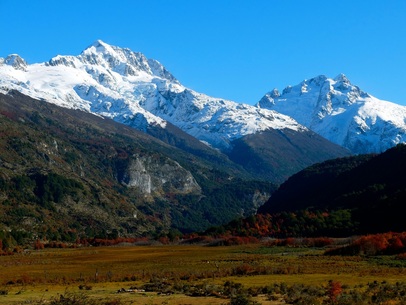 Patagonia in the Fall Patagonia in the Fall WOW - about sums it up! We just spent two weeks in Northern Patagonia (the Arctic of South America) with a rental truck. It is a weird time of year to do it since it is fall now and too cold for most tourists (but not us Canadianses) but it was great because we had the whole place to ourselves!
Ideally maybe it would have been nicer to camp with either warmer weather, or proper cold weather camping gear. We did camp a few nights but were really freezing cold (there was ice involved) so whenever possible we stayed in hostels (which were so expensive, like US$30/night compared to the rest of SA, avg US$10). The coldniss and rainyniss also made hiking slightly less enjoyable, though for the most part we had pretty good weather, considering. We started our two week truck rental in Puerto Montt (see travel map, southern Chile) and decided to also return it there since it would cost an extra US$500 to drop it off in another town, jeeeesh. We got the extra insurance to be able to cross the border into Argentina (about $100 extra) and then headed out! Our itinerary was a bit screwed up since we didn't have much success researching the best routes to take etc. So if you are reading this as a travel guide for yourself I have a number of recommendations at the bottom of this so you don't waste time like we did!  How was I ever afraid of her How was I ever afraid of her My job for the month at Comunidad Inti Wara Yassi (CIWY) was to walk with Tigre (with her because she leads) in the jungle every day. Before starting my first day I was told that Tigre doesn't take trails, is very energetic, hunts and typically gets her handlers lost in the jungle overnight at least once during their stay. I was also warned how violent she can be. On the day that we arrived, the girl who was currently training to walk with Tigre was attacked pretty badly (stitches on her arms and possibly other places, I didn't really want to know more). Alarm bells started ringing in my head but something inside me told me this is something I had to do. Walking alone in the jungle with a wild cat has been a fantasy of mine for about for as long as I can remember, and only now have I realized that it is something I will really be able to do!  I wish someone had told me how gentle and patient Tigre can be, because this is the Tigre I soon got to know and love. From the moment we arrived at CIWY all I heard were horror stories about how violent she is and how other volunteers had gotten lost in the jungle overnight because of her. Still, it wasn't until I began to work with her that my subconscious fears began to surface to the point that I nearly gave up. I had imagined a much more relaxed experience. Naive, I now know.
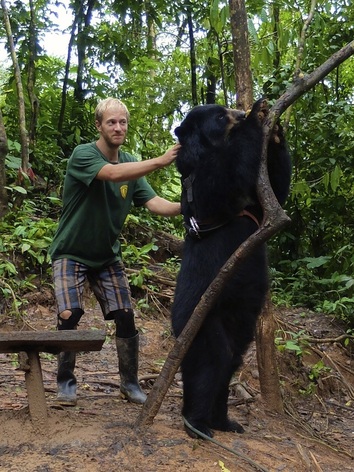 Mandrew bonding with his project, Balu Mandrew bonding with his project, Balu We first read about Comunidad Inti Wara Yassi (CIWY) in a guest book at cozy coffee shop in Copacabana about a week before we decided to go there. We were on the lookout for some sort of volunteer gig, but weren't terribly inspired by the various organic farming options we'd found online. Although it wasn't something we'd really considered, we jumped at the idea of working with jungle animals! Looking into the organization further we were touched by the story of how a Bolivian couple in the late 1980's, in the hopes of making a difference in Bolivia, established a school of alternative education outside of La Paz for the many children of miners who had relocated to the area. After being exposed to the lush surrounding rainforest and its ruthless destruction, the children vowed to protect the fragile rainforest and its animals through a campaign of education and awareness. During a later field trip to Rurrenabaque, the project took an important shift after the kids pooled together their meagre funds to purchase and rescue a spider monkey from its local owners who were forcing it to drink alcohol and dance for their amusement. Over the next few years, a number of other animals were adopted and rescued, despite the constant struggle to figure out what to do with them. Finally, Parque Machia, the first wildlife refuge in Bolivia, was established. For nearly 20 years now, professionals and volunteers from all over the world have been supporting this cause through the raising of funds and the donating of time. The organization now manages three parks in Bolivia where upwards of 500 animals of over 30 different species (including bears, cats, birds, monkeys, coatis, and foxes) are cared for.  Chelsea and Tigre chillin' in the jungle Chelsea and Tigre chillin' in the jungle A few days after reading the guest book in Copacabana we saw a poster for CIWY at our hostel in La Paz, and soon after ran into a guy who knew a guy who had volunteered with them and spent a month walking a puma. By then the seed of the idea had sprouted and taken root, and we found ourselves packing our bags. After a long day of bussing through Cochabamba and beyond, we arrived in Villa Tunari late in the evening and crawled to the closest hostel to hide from the torrential downpour that welcomed us. In the morning we walked across the bridge looking for the CIWY office, only to walk right past it. It was not marked well and looked more like an abandoned concrete structure with graffiti all over it.
We were quick to forgive the outer appearance of the office after being hailed by other volunteers watching from the cafe. On the inside, the place was humming with activity: volunteers chopping food for the monkeys, hauling hay and trees for the cats and bear, unloading endless truckloads of bananas, and disposing of bucketfuls of animal waste. Everyone looked very enthusiastic!  Something about this photo gives me the heebie-jeebies Something about this photo gives me the heebie-jeebies Shamans, medicinal plants, earthquakes, ancient cities, mysterious symbols; Peru really is the most diverse and magical country we have been to so far! Since this is our first visit to Peru (though likely not our last) we decided to go a bit more mainstream than usual and visit the recommended sites along the well-known "Gringo Trail", taking us through all of the major attractions of the country, starting with Lima. To start out on our route we headed via airplane from Iquitos to Lima, in order to save a week or more of time (the other option was another multi-day cargo boat from Iquitos since it has no road access, followed by a 24+ hour bus ride). We didn't spend much time in Lima before departing to Pisco to visit the Ballestas Islands and Paracas National Reserve, and to unexpectedly experience a 5.7 magnitude earthquake while face-timing with Donna and Jim, Andrew's parents. The next stop on the Gringo Trail was Nazca where we saw for ourselves the infamous Nazca Lines and learned a lot about the ancient cultures that inhabited the area between 100bc and 800ad, and then spent the next few days barfing due to the horrific flight over the lines and/or some bad food or water, who knows what. After Nazca was Arequipa, the second most populous city in Peru and the hub to get to the beautiful Colca Canyon (but we decided not to go there since it was a bit far and really expensive). Finally, we arrived in Cusco, our base for some intense Shamanism and of course, to visit Machu Picchu. Next and last on the list (heading out this afternoon via bus) will be the town of Puno where we can visit Lake Titicaca before crossing the border into Bolivia. We can really see why so many people travel this route: the diverse beauty and culture have taken our breath away almost every day since we have arrived. Gringo Trail - click on the icons for informationIquitos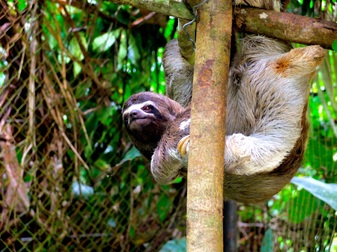 Chili sloth Chili sloth Following our insane Rio Napo trip we spent a couple of days exploring the incredibly loud Amazonian city of Iquitos. There were hardly any cars or trucks in the city, but thousands of moto-taxis (converted motorbikes with carriages on the back), thus the very noisy streets. We have come to realize, however, that almost everywhere in South and Central America so far the people seem to need noise at all hours of the day. You can't help but wonder if they purposfully design the bikes to be extra loud!
On one day while our muuuuuuch needed laundry was being done we wandered around the Belen Market, where one may find almost any kind of medicinal plant (or animal for that matter) you can think of. Of course, as is always wise while wandering in local markets, we only took out our camera a few times and made sure that not many people saw us with it, and we left anything else of any value back at the hostel. Quito overlooking the old city overlooking the old city We spent the last week or so in and around Quito, the highest city in Ecuador (at 2800 metres above sea level). With a population of about two million it’s a reasonably large city, though the surrounding mountains squeeze it into such a long and narrow shape that it can take hours to travel from one end to another. Despite our general dislike of large cities, we actually enjoyed a couple afternoons wandering around and taking in the sights: epic churches, interesting museums, huge parks, artisanal markets, and interesting architecture - oh, and there’s also a pub with craft beer which is a much needed change from the usual boring Ecuadorian beer.  chillin' with some of the IAESTE crowd chillin' with some of the IAESTE crowd One of the main reasons we decided to visit Quito is because a friend of mine, Michael-Anthony (usually just “M.A.”) happened to be here for an IAESTE (International Association for the Exchange of Students for Technical Experience... phew!) conference. M.A. and I have shared some other interesting coincidences in the past – on my first day of work during my IAESTE internship in Vienna in 2007, I walked into the office only to find M.A. (who was also taking Mechanical Engineering at UofT) sitting at the desk beside mine. For whatever reason, we had to travel halfway around the world to become friends, and had soon drank half the beer in Austria and formed an impromptu band with a couple other interns... some great memories. It was nice to spend some time catching up and taking in some of the sights. He also snuck us onto a bus tour and scored us a free lunch, helping us pose as conference attendees. =)  will the Coriolis forces tear her torso apart?? will the Coriolis forces tear her torso apart?? The center of Quito is located about 25 km south of the actual equator, and one of the more interesting stops on the bus tour was at “la mitad del mundo” – a site marking the location (or close enough) of the actual equator. Our tour guide eagerly demonstrated some of the phenomena associated with being on the equator, most of which M.A. and I, being rational engineers, tried to debunk. The one that really irked us was the demonstration of water draining in a sink, with the direction changing due to the Coriolis Effect. The demonstration showed that the same sink drained differently depending on where it was placed: directly on the equator (draining straight down), ten feet north of the equator (draining counter-clockwise), and ten feet south of the equator (draining clockwise). At first we were a bit baffled, but upon looking closer we noticed that the guy leading the show was totally cheating!! Before draining the sink on the equator, the water was left for a few minutes to make sure it was completely still, but right before the demos off of the equator the water was poured from a bucket in such a way as to already get the water moving in the right direction. Poppycock, I say! Once the demo ended, we stepped in and were able to, by pouring from the bucket in the right way, get the water to drain the opposite way it was supposed to. BAH. I’m not disputing the Coriolis Effect, I’m just saying there’s no way it can make a difference over such a small scale… anyways, maybe we were taking things too seriously. Cotopaxi National Park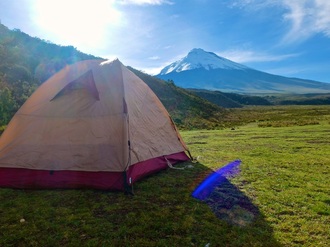 our mountain home our mountain home The other reason we came to Quito is its proximity to Cotopaxi National Park, about fifty kilometres south of Quito and the home of Cotopaxi, Rumiñahui, and Sincholagua volcanoes, with Cotopaxi being among the highest active volcanoes in the world. If you’ve been keeping up with our adventures so far, you’d know that we were way overdue for a volcano hike, though the high elevation made this one a much different experience from La Concepción and Telica (Nicaragua) and Arenal (Costa Rica).
"Six days, 228 miles, a close grizzly encounter, way too much sun, an incredible thunderstorm, and a constant feeling of awe - this was a trip we'll both remember for a lifetime." 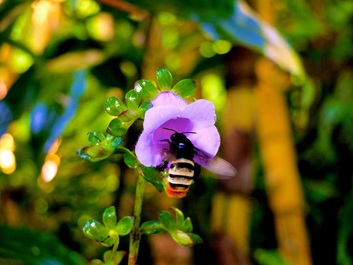 We've been away from internet for awhile now, time to catch up on here! Andrew already posted a blog about Bolita but it didn't include pictures so here you are! It was such an interesting little place, exactly what we were hoping for. I won't re-describe everything for you but there were a couple of things I wanted to add to Andrews notes. We had so much time to hike around and watch wildlife near Bolita. The picture here is from beside our table at breakfast. Hummingbirds, bees, monkeys, macaws, doves, geckos, etc. were always nearby.  This picture shows the nearly finished product of our volunteer work. We were asked to build a shelter over the clothes-line. We used bamboo which we cut down from a nearby bush, and some scraps that were lying around from previous projects. It took us two days (4-5 hours per day) to build and was very fun! We learned a lot about working with bamboo though didn't have any instruction - all by trial and error.  At one point Andrew got a bamboo cut on his thumb. At first he looked at it a bit nervously and insisted that he was ok when I asked. After a few minutes, he got off of the stump he was standing on and wobbled to the kitchen sink. I knew he was going to faint so I grabbed a stump for him to sit on while I held onto him from behind. (Note from Andrew - it was a really hot and sunny day of hard work, I was really just quite dehydrated! =P)
This is not the first time I've had to do this so was pretty routine, lol. When he was feeling up for it we cleaned it out well and stuck a bandage on it. It really wasn't too bad, but he said he got disturbed when it began to ooze dark blood. lol, funny day. The next day I got a couple of bamboo cuts as well (nothing bad) but it is worth noting that bamboo can be pretty dangerous for that! Super sharp! We wore gloves after a few warning cuts.  We spent the last four days hiking and nature watching in Corcovado, the largest of Costa Rica’s National Parks and reportedly one of the most biologically diverse places on the planet. We saw a ton of cool creatures, took over a thousand photos & over an hour of video footage, ate a ridiculous amount of tuna and peanut butter, worked the hell out of our legs, and returned to civilization the dirtiest and smelliest we’ve ever been. All in all, a great success in our book. =)  We spent three nights at Sirena Ranger Station, deep in the heart of the park. To get there, we took what I’ll now term a “potato bus” (more on this later) from Puerto Jimenez to the end of the road at Carate, then hiked a beautiful 20 km along the Pacific coast, at times working our way up and around large rock outcrops or wading through streams and rivers. When we had originally gotten our park permits and spoken with the park staff in Jimenez, we were told we’d need to be on the trails by 6am in order to hit the final river crossing (at the Rio Claro) during low tide - crossing at high tide is not recommended, partly due to dangerous currents that could suck you out into the ocean, and partly because the deeper waters allow bull sharks and crocodiles to make their way up the river to feed on fish (or unlucky tourists). We thought we’d take this fairly seriously, and decided to catch the bus to Carate the night before the hike to allow us to get a nice, early start.  Our original plan was to arrive in Carate and find a nice secluded spot to pitch a tent, probably somewhere along the beach. As we were boarding the “bus” from Jimenez, however, we bumped into a couple frazzled-looking backpackers first words to us were, “DON’T CAMP ON THE BEACH!” – they had just returned to town after having their bags stolen from them while camping on the beach in Carate the night before. Yikes – we rode to Carate, and with only a couple hours of daylight to spare and no real idea where we’d end up spending the night, we began our trek down the beach. We were starting to get a bit worried after about 45 minutes in, until we noticed a quaint little property just off the beach with a perfectly mown lawn, impeccably kept gardens, and a few small huts – where the hell were we?? We wandered in and struck up a conversation with the only guy in sight, an older gentleman named Bob who quickly realized we were in a bit of a pickle and said he had no problem with us pitching our tent on the grass. It turned out that he and his son Kelly were on vacation from Northern California, spending a week of it on the property which was owned by a friend of a friend of theirs. In no time, Bob and Kelly were sharing with us their dinner of beans & rice (what else), some great conversation (did you guys know about this Ison comet that’s approaching extremely close to Earth?), and even the last of their special stash (which we smoked from their little seashell pipe). Chelsea and I felt like we’d stumbled into some fairytale paradise, and were happy to contribute one of our very precious chocolate covered coffee beans and a Snickers bar, which we all shared for dessert. An unexpected but most excellent evening!
|
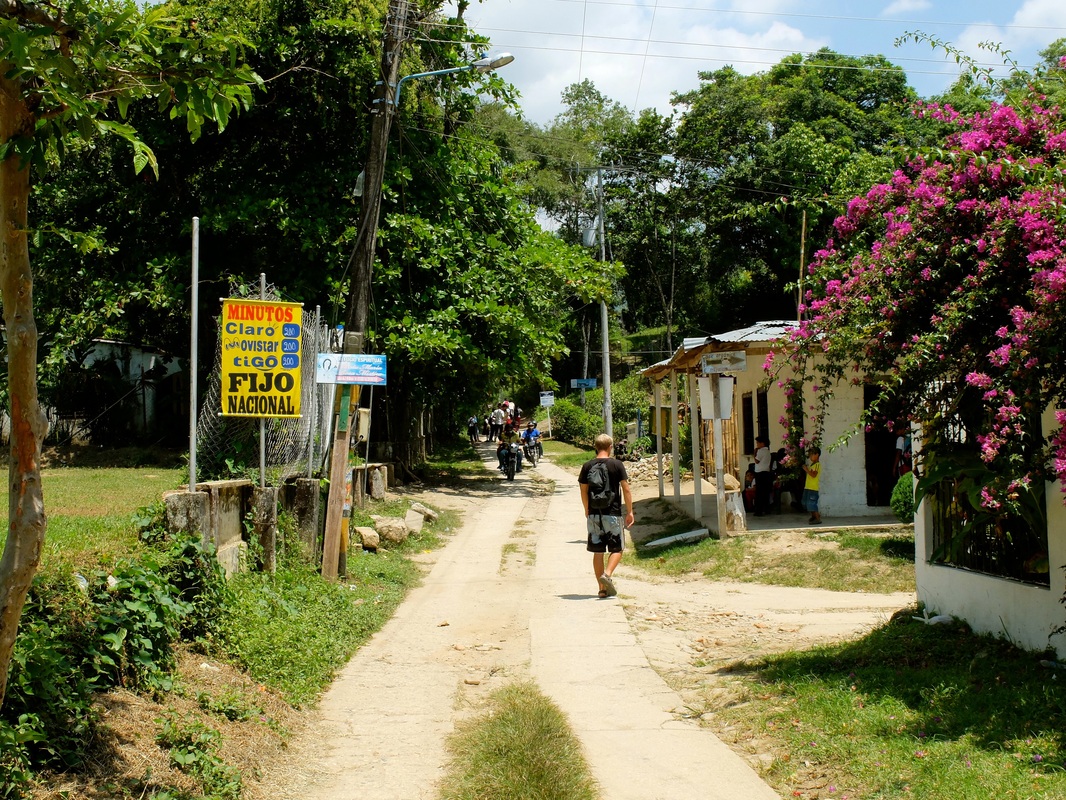


 RSS Feed
RSS Feed